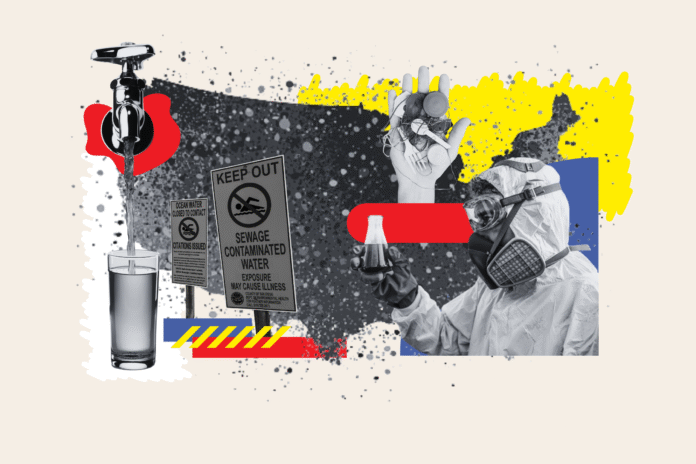Alarming Findings: Six Contaminants in U.S. Drinking Water Exceed Legal Limits, Study Reveals
This heading captures attention by emphasizing the seriousness of the issue and the widespread impact on public health.
Study Reveals Six Contaminants Exceeding Legal Limits in U.S. Drinking Water
A recent study conducted by the Environmental Working Group (EWG) has uncovered alarming findings regarding the safety of drinking water across the United States. The comprehensive analysis, which surveyed over 50,000 water systems from 2021 to 2023, identified 324 contaminants in drinking water, with 12 of these contaminants detected in every state. Notably, six of these contaminants were found to exceed the legal guidelines established by the federal government, raising significant public health concerns.
Overview of Findings
The EWG’s study highlights that while many water systems comply with the Environmental Protection Agency (EPA)’s maximum contaminant level (MCL) guidelines, certain regions reported levels that pose risks to public health. The EPA maintains that over 90% of active public water systems meet health-based standards, ensuring safe drinking water for the majority of Americans. However, the presence of contaminants exceeding legal limits in some areas necessitates further scrutiny.
Key Contaminants Identified
-
Arsenic
- Prevalence: Found in drinking water systems serving approximately 481,000 Americans across 29 states.
- Health Risks: Arsenic is a known carcinogen linked to various health issues, including cardiovascular disease and developmental neurotoxicity. Studies indicate that even low levels of arsenic exposure can adversely affect birth outcomes.
- Regulatory Status: The EPA’s MCL for arsenic is set at 10 micrograms per liter, with some utilities in California, New Mexico, Michigan, and Texas reporting levels significantly above this threshold.
-
Barium
- Prevalence: Approximately 298 Americans, primarily in New York and Pennsylvania, are exposed to barium levels exceeding the EPA’s MCL of 2,000 micrograms per liter.
- Health Risks: High concentrations of barium can increase the risk of cardiovascular disease and hypertension.
-
Fluoride
- Prevalence: More than 18,000 Americans are drinking water with fluoride levels above the EPA’s MCL of 4,000 micrograms per liter, with some utilities reporting levels as high as 12,000 micrograms per liter.
- Health Risks: While fluoride was initially added to combat tooth decay, recent studies suggest potential negative impacts on IQ levels in children, prompting some states like Utah and Florida to ban its use in water systems.
-
Haloacetic Acids
- Prevalence: Nearly 400,000 Americans are consuming water with haloacetic acid levels exceeding the EPA’s MCL of 60 micrograms per liter.
- Health Risks: Long-term exposure to high levels of haloacetic acids has been linked to cancer and birth defects.
-
Radium
- Prevalence: Found in drinking water systems across all 50 states, with over 100,000 Americans exposed to levels exceeding the EPA’s MCL of 5 picoCuries per liter.
- Health Risks: Radium is a radioactive element associated with an increased risk of bone and other cancers, particularly in smaller, rural water systems.
- Total Trihalomethanes (TTHMs)
- Prevalence: More than 400,000 Americans are drinking water with TTHM levels above the EPA’s MCL of 80 micrograms per liter, with elevated levels reported in Louisiana, Florida, Texas, and California.
- Health Risks: TTHMs are classified as human carcinogens and are associated with bladder cancer, liver and kidney toxicity, and potential developmental harm.
Expert Opinions
Experts emphasize the need for improved monitoring and regulation of drinking water sources. Natalie Exum, a professor at Johns Hopkins University, noted that many rural communities, particularly those relying on private wells, face challenges in complying with MCLs, leaving them vulnerable to unsafe levels of contaminants. Vasilis Vasiliou, chair of environmental health sciences at Yale, echoed these concerns, highlighting the importance of revising MCLs for certain contaminants based on emerging research.
Susan Richardson, a chemistry professor at the University of South Carolina, expressed particular concern about arsenic and disinfection by-products like haloacetic acids and TTHMs, urging consumers to consider water filtration options if contaminant levels approach or exceed regulatory limits.
Conclusion
The findings from the EWG study underscore the ongoing challenges in ensuring safe drinking water for all Americans. While the majority of water systems meet regulatory standards, the presence of contaminants exceeding legal limits in certain areas raises critical public health questions. As discussions around water safety continue, experts advocate for enhanced testing, regulation, and public awareness to protect vulnerable communities and ensure access to clean drinking water.
For further information and resources on water safety, individuals are encouraged to consult local water quality reports and consider appropriate filtration options based on their specific needs.
